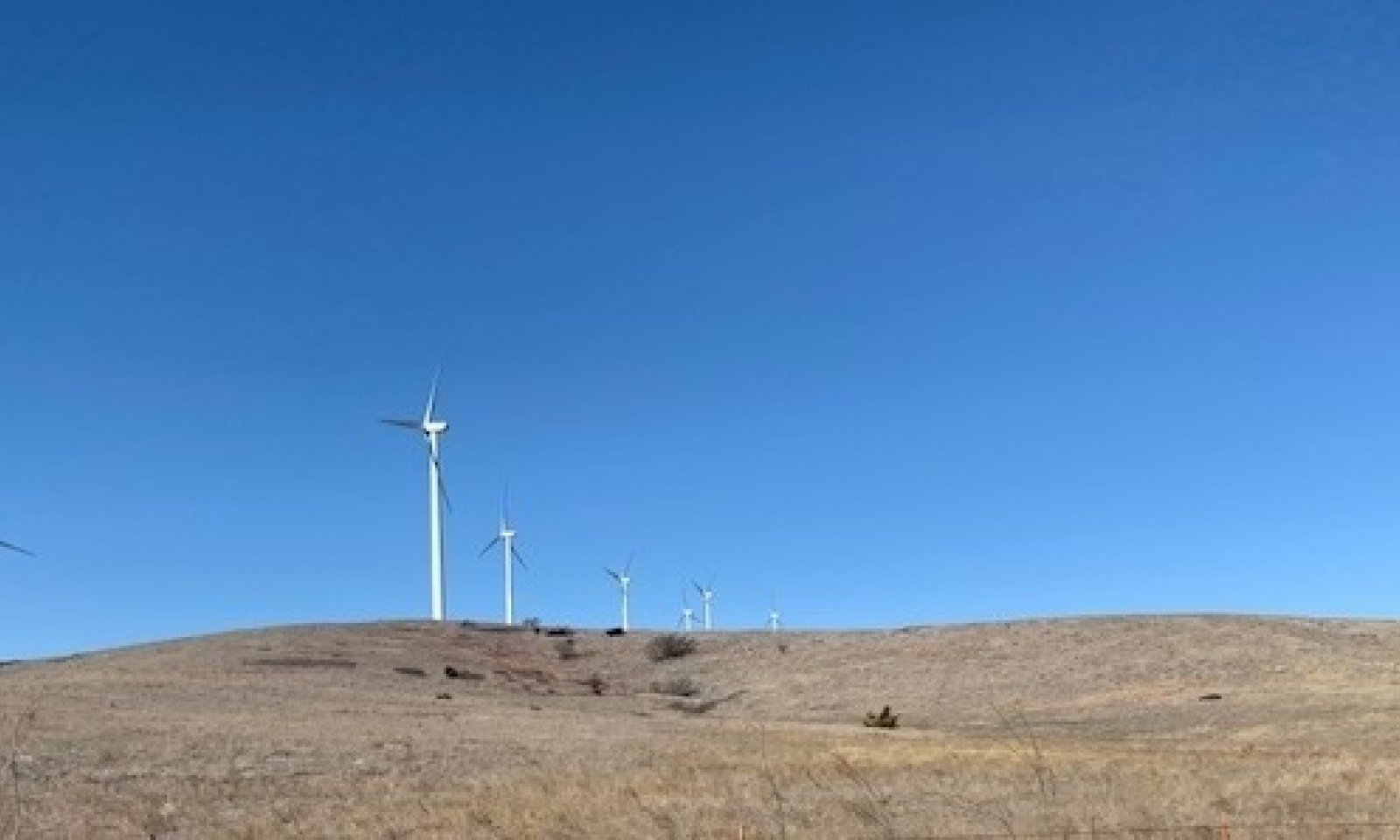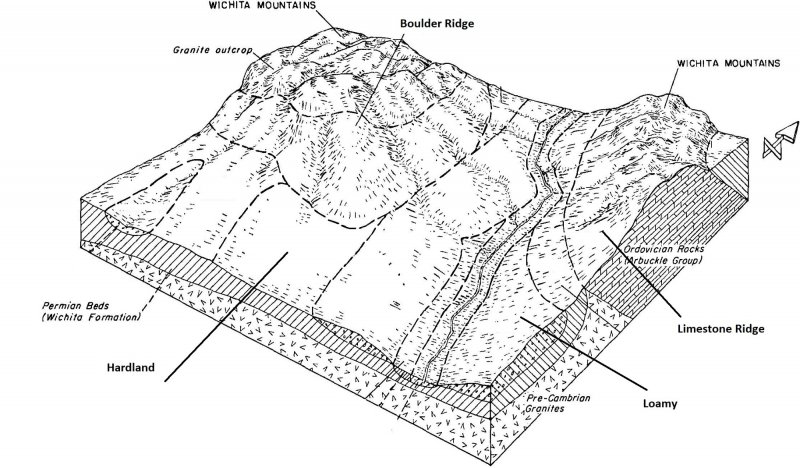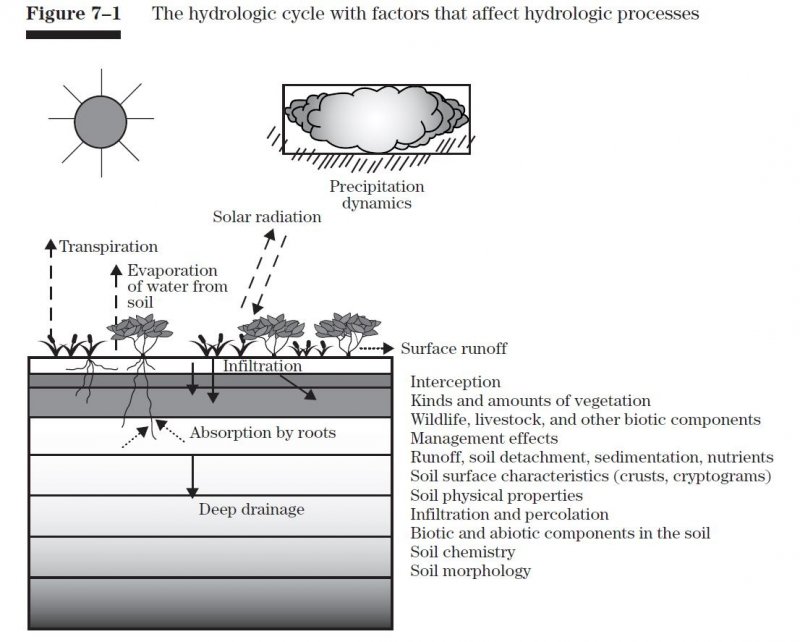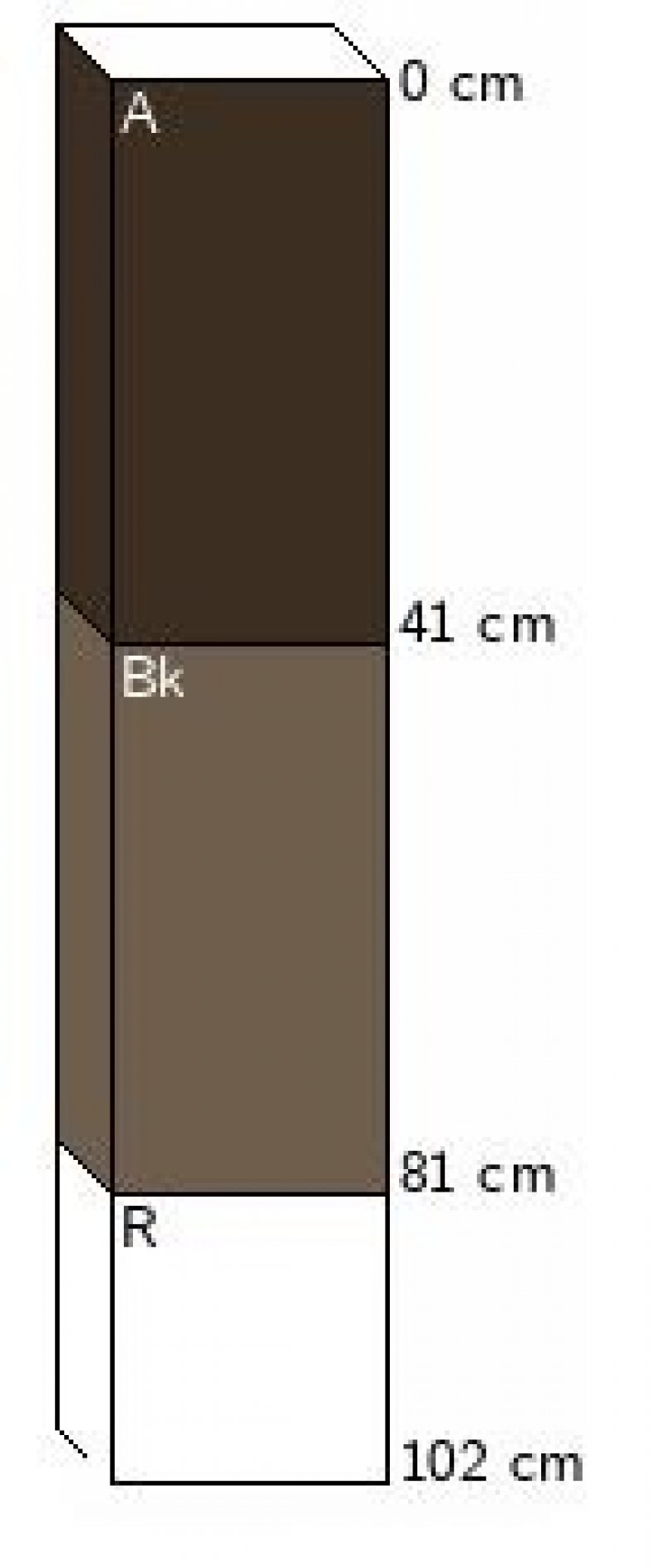

Natural Resources
Conservation Service
Ecological site R082BY048OK
Limestone Ridge
Last updated: 9/19/2023
Accessed: 12/21/2025
General information
Provisional. A provisional ecological site description has undergone quality control and quality assurance review. It contains a working state and transition model and enough information to identify the ecological site.
MLRA notes
Major Land Resource Area (MLRA): 082B–Wichita Mountains
This area is entirely in southwestern Oklahoma. It makes up about 1,060 square miles. The towns of Granite, Snyder, Medicine Park, and Meers are in this MLRA. U.S. Highways 62 and 183 intersect in the area, and Interstate 44 crosses the far eastern end. Quartz Mountain State Park, the Wichita Mountains Wildlife Refuge and the Fort Sill Military Reservation are in this area.
The surface geology of this MLRA is dominated by intrusive igneous rocks (primarily granite) of Precambrian age with associated limestone, sandstone, dolomite, chert, and shale of Cambrian age. This area is underlain by both igneous and sedimentary rocks in a structurally complex setting. Igneous rocks primarily include granite, rhyolite, gabbro, and anorthosite of Precambrian age. Sedimentary rocks include limestone, sandstone, dolomite, and chert. A large outcrop known as the "Limestone Hills" is part of this unit. The Meers Fault is a prominent geologic feature in this area.
LRU notes
NA
Classification relationships
The Limestone Ridge ecological site is correlated to soil components at the Major Land Resource Area (MLRA) level which is further described in USDA AgHandbook 296.
This area is included in EPA Level IV Ecoregion 27r "Limestone Hills".
Ecological site concept
The Limestone Ridge ecological site occurs on moderately deep loam soils over limestone parent material on hills. These soils are cobbly and support mainly herbaceous vegetation. The soils of the site contain increased calcium carbonate.
Associated sites
| R082BY007OK |
Edgerock These sites are on shallow soils over tilted limestone adjacent to the Limestone Ridge locations. |
|---|
Table 1. Dominant plant species
| Tree |
(1) Quercus stellata |
|---|---|
| Shrub |
Not specified |
| Herbaceous |
(1) Schizachyrium scoparium |
Physiographic features
The Limestone Ridge ecological site occurs on gently to moderately sloping hills. Slopes are typically smooth and rounded at 3 to 20 percent, however, some slopes may be as much as 45 percent.

Figure 1.
Table 2. Representative physiographic features
| Landforms |
(1)
Upland
> Hill
(2) Upland > Hillslope |
|---|---|
| Runoff class | High to very high |
| Elevation | 1,000 – 2,300 ft |
| Slope | 3 – 20% |
| Aspect | Aspect is not a significant factor |
Table 3. Representative physiographic features (actual ranges)
| Runoff class | Not specified |
|---|---|
| Elevation | Not specified |
| Slope | 1 – 45% |
Climatic features
The climate is characterized by hot, often dry summers; mild autumns; mild to cold winters; and moist cool springs. There can be a wide fluctuation in annual and seasonal rainfall. Extremes in precipitation can range from as low as 10 inches to as high as 45 inches annually. Drought cycles occur at unpredictable intervals, range in duration from 3 to 5 years and occasionally last longer than 5 years. Approximately 75 percent of the total annual rainfall occurs during April to September.
Table 4. Representative climatic features
| Frost-free period (characteristic range) | 167-186 days |
|---|---|
| Freeze-free period (characteristic range) | 200-220 days |
| Precipitation total (characteristic range) | 31-34 in |
| Frost-free period (actual range) | 158-189 days |
| Freeze-free period (actual range) | 180-220 days |
| Precipitation total (actual range) | 30-35 in |
| Frost-free period (average) | 176 days |
| Freeze-free period (average) | 200 days |
| Precipitation total (average) | 33 in |
Figure 2. Monthly precipitation range
Figure 3. Monthly minimum temperature range
Figure 4. Monthly maximum temperature range
Figure 5. Monthly average minimum and maximum temperature
Figure 6. Annual precipitation pattern
Figure 7. Annual average temperature pattern
Climate stations used
-
(1) LAWTON MUNI AP [USW00003950], Lawton, OK
-
(2) LAWTON [USC00345063], Lawton, OK
-
(3) WICHITA MTN WR [USC00349629], N Central Comanche Cnty, OK
-
(4) ALTUS DAM [USC00340184], Lone Wolf, OK
Influencing water features
The Limestone Ridge ecological site is an upland site, and not part of a wetland or riparian system.
Wetland description
NA

Figure 8.
Soil features
The Limestone Ridge ecological site is made up of shallow to very shallow dark-colored soils over a limestone bedrock. The soils vary in depth from 30 to 40 inches and are clay or clay loam in texture . Most of the soils on this site are nearer the shallower limits (30 inches) of the depth range. There can be random shallower soils (less than 30 inches) present. Limestone gravel and cobblestones make up 15 to 75 percent of the soil mass. Soil structure is usually granular. Moisture storage capacity is low.
Representative soil: Somervell soil series
Taxonomic Classification: Loamy-skeletal, carbonatic, thermic Typic Calciustolls
Soils are mapped for each county within the MLRA. Mapunits are representations of the major soil series component(s) and named accordingly. Each mapunit is spatially represented on a digital soils map as polygons of different shapes and sizes. Within these mapunits, there are often minor soil series components included. These minor components are soils that occur within a mapunit polygon, but are of small extent (15 percent or less of the mapunit area). However, it is difficult to separate these minor soils spatially due to the scale of soil mapping.
Ecological sites are correlated at the component level of the soil survey. Therefore, a single mapunit may contain multiple ecological sites just as it may contain multiple soil components. This is important to understand when investigating soils and ecological sites. A soil survey mapunit may be correlated to a single ecological site based on the major component; however, there may be inclusional areas of additional ecological sites which are correlated to the minor components of that particular soil mapunit.

Figure 9.
Table 5. Representative soil features
| Parent material |
(1)
Residuum
–
limestone
|
|---|---|
| Surface texture |
(1) Very cobbly loam (2) Very gravelly |
| Family particle size |
(1) Clayey |
| Drainage class | Well drained |
| Permeability class | Moderate |
| Soil depth | 20 – 40 in |
| Surface fragment cover <=3" | 20 – 50% |
| Surface fragment cover >3" | 20 – 50% |
| Available water capacity (0-40in) |
1 – 4.7 in |
| Electrical conductivity (0-40in) |
2 mmhos/cm |
| Sodium adsorption ratio (0-40in) |
1 |
| Soil reaction (1:1 water) (0-40in) |
7.9 – 8.4 |
| Subsurface fragment volume <=3" (0-40in) |
15 – 50% |
| Subsurface fragment volume >3" (0-40in) |
20 – 75% |
Ecological dynamics
The Limestone Ridge ecological site supports primarily midgrasses and shortgrasses, along with various tallgrasses in the deeper soil areas, and a few woody species scattered throughout the site.
The Reference State is a grassland formed over weathered limestone soils on hills. These grasslands evolved through periods of grazing, drought, and fire. The dominant species are adapted to all of these drivers. The plant communities on the site are dynamic and may fluctuate from year to year in both production and species composition.
Time since fire is an important predictor of woody species abundance. While many of the woody species are capable of surviving and re-sprouting post-fire, periodic burning keeps them as a minor component of the community. Historic estimates place the fire return interval from 2 to 5 years in this region. Unlike adjacent, granitic sites, the Limestone Ridge ecological site does not have an abundance of large rock outcrops that protect vegetation from fires. Increases in woody species, mainly juniper, have been noted in areas that have not been subjected to fire for many years.
While the plants on the site are adapted to periodic grazing, prolonged abusive grazing practices can lead to a shift in species composition. Palatable species are grazed heavier and non-palatable species are able to out-compete them for resources. If shortgrasses and/or bare ground increase, there may be an increased risk of precipitation runoff and decreased infiltration.
Drought can also have an impact on species composition, productivity, and vigor. Long-term drought, when coupled with abusive grazing, can exacerbate the decline of range health on the site.
State and transition model
More interactive model formats are also available.
View Interactive Models
Click on state and transition labels to scroll to the respective text
Ecosystem states
State 1 submodel, plant communities
State 1
Grassland

The Grassland state represents the historic range of variability under a natural disturbance regime. Perennial grasses dominate the ecology in the reference state along with various forbs and few woody species. Overall production is estimated between 1,500 pounds and 3,000 pounds per acre per year.
Characteristics and indicators. The site is dominated by warm season perennial grass which allow for good ground cover and infiltration. Bare ground is not common on the site. Woody species present with canopy cover not exceeding 10 percent.
Resilience management. The reference state is quite resilient and able to tolerate periodic grazing, drought and fire. Woody encroachment is limited due to the nature of the limestone parent material and the climate.
Community 1.1
Sideoats Grama/Little Bluestem
This community phase is mainly midgrasses and shortgrasses. Tallgrasses may grow in deeper soil areas where deeper soils and moisture accumulates. Big bluestem and lndiangrass are the main tallgrasses. Sideoats grama, little bluestem, hairy grama and tall grama dominate the shallow soils. Skunkbush is the most common woody plant. Estimated annual production is estimated at 1,500 to 3,000 pounds per acre.
Resilience management. Fire and grazing are the primary driver for changes in the communities. Abusive grazing can lead to changes in species dominance. Drought can also exacerbate this shift. Woody species may increase in abundance with the absence of fire or alternative brush management.
Figure 10. Plant community growth curve (percent production by month). OK0001, Native, Warm Season Grasses. Typically, the summer growing season for warm season grasses begins April 5 to 15 and ends October 15 to 25. Nearly three-fourths of the season production will occur before the first of July. This varies from year to year depending upon temperatures and precipitation..
| Jan | Feb | Mar | Apr | May | Jun | Jul | Aug | Sep | Oct | Nov | Dec |
|---|---|---|---|---|---|---|---|---|---|---|---|
| J | F | M | A | M | J | J | A | S | O | N | D |
| 0 | 1 | 5 | 10 | 20 | 30 | 10 | 5 | 10 | 6 | 2 | 1 |
Community 1.2
Shortgrass/midgrass
Within this community phase, the dominance has shifted from little bluestem and sideoats grama to blue grama, hairy grama, and other shortgrass species. Midgrasses still persist, but are in a lower state of vigor than community phase 1.1.
Resilience management. This community phase may be temporarily induced by heavy grazing pressure and drought. With favorable precipitation and ecologically sound grazing management, this community phase may shift back to 1.1.
Pathway 1.1A
Community 1.1 to 1.2
With prolonged heavy grazing pressure, sometimes coupled with drought, the more palatable midgrasses with be reduced in vigor. This can allow some shortgrass species to outcompete them for resources and eventually dominate the plant community.
Pathway 1.2A
Community 1.2 to 1.1
With adequate growing season precipitation and ecologically sound grazing management, the midgrasses can regain vigor and begin to dominate the community once more.
Context dependence. This shift is subject to remain viable, but depends on the midgrass plants and/or seedstock in the soil.
Conservation practices
| Prescribed Grazing |
|---|
Additional community tables
Interpretations
Animal community
The Limestone Ridge ecological site supports a vast array of animals and birds. Many species are protected in their native habitat by the Wichita Mountains National Wildlife Refuge operated by the U.S. Fish and Wildlife Service. Over 50 mammal, 240 bird, 64 reptile and amphibian, 36 fish, and 806 plant species are protected within the park's borders, making it one of the most diverse wildlife refuges in the country. Herds of bison, deer, and elk roam through the park. Prairie-dog towns are also present. Thirteen separate lakes are managed by the Refuge, including Lakes Elmer Thomas, French, Jed Johnson, Lawtonka, Quahnah Parker, Rush, and more. Fish include large and smallmouth bass, sunfish, crappie, and channel catfish.
Hydrological functions
None
Recreational uses
Rock climbing, picnicking, hiking, backpacking, geology viewing, mountain biking, camping, and fishing are just a few of the many recreational activities offered in this ecological site.
Wood products
NA
Other information
NA
Supporting information
Inventory data references
Draft ESDs, Oklahoma NRCS.
Historic Range Site Descriptions, Oklahoma NRCS.
Inventory Project, dated 1988, Oklahoma NRCS.
Soil Survey Manuscripts, Comanche and Kiowa Counties, Oklahoma.
Yields are estimates based on very limited clipping data.
Other references
Buck, Paul. 1964. Relationships of the woody vegetation of the Wichita Mountains Wildlife Refuge to geological formations and soil types. Ecology 45: 336-344.
Crockett, Jerry J. 1964. Influence of soils and parent materials on grasslands of the Wichita Mountains Wildlife Refuge, Oklahoma. Ecology 45: 326-335.
Contributors
Colin Walden, Stillwater Soil Survey Office
PES Edits by Tyson Morley, MLRA Soil Scientist, Altus, Oklahoma
Dr. Jack Eckroat, Grazing Lands Specialist, NRCS, Oklahoma
Approval
Bryan Christensen, 9/19/2023
Acknowledgments
Site Development and Testing Plan
Future work, as described in a Project Plan, to validate the information in this Provisional Ecological Site Description is needed. This will include field activities to collect low-, medium-, and high-intensity sampling, soil correlations, and analysis of that data. Annual field reviews should be done by soil scientists and vegetation specialists. A final field review, along with peer review, quality control, and quality assurance reviews of the ESD will be needed to produce the final document. Annual reviews of the Project Plan are to be conducted by the Ecological Site Technical Team.
This site description, along with others in the MLRA 82B, is the product of the Provisional Ecological Site Description initiative from 2015 to 2020. The sites were described with limited field work and rely heavily on historical reports and documentation due to the scope of the initiative, time constraints, and staffing shortages. These sites will be further researched, sampled, and documented throughout the course of a Digital Soil Mapping update project commencing by the Altus Soil Survey Office staff.
Rangeland health reference sheet
Interpreting Indicators of Rangeland Health is a qualitative assessment protocol used to determine ecosystem condition based on benchmark characteristics described in the Reference Sheet. A suite of 17 (or more) indicators are typically considered in an assessment. The ecological site(s) representative of an assessment location must be known prior to applying the protocol and must be verified based on soils and climate. Current plant community cannot be used to identify the ecological site.
| Author(s)/participant(s) | |
|---|---|
| Contact for lead author | |
| Date | 09/26/2023 |
| Approved by | Bryan Christensen |
| Approval date | |
| Composition (Indicators 10 and 12) based on | Annual Production |
Indicators
-
Number and extent of rills:
-
Presence of water flow patterns:
-
Number and height of erosional pedestals or terracettes:
-
Bare ground from Ecological Site Description or other studies (rock, litter, lichen, moss, plant canopy are not bare ground):
-
Number of gullies and erosion associated with gullies:
-
Extent of wind scoured, blowouts and/or depositional areas:
-
Amount of litter movement (describe size and distance expected to travel):
-
Soil surface (top few mm) resistance to erosion (stability values are averages - most sites will show a range of values):
-
Soil surface structure and SOM content (include type of structure and A-horizon color and thickness):
-
Effect of community phase composition (relative proportion of different functional groups) and spatial distribution on infiltration and runoff:
-
Presence and thickness of compaction layer (usually none; describe soil profile features which may be mistaken for compaction on this site):
-
Functional/Structural Groups (list in order of descending dominance by above-ground annual-production or live foliar cover using symbols: >>, >, = to indicate much greater than, greater than, and equal to):
Dominant:
Sub-dominant:
Other:
Additional:
-
Amount of plant mortality and decadence (include which functional groups are expected to show mortality or decadence):
-
Average percent litter cover (%) and depth ( in):
-
Expected annual annual-production (this is TOTAL above-ground annual-production, not just forage annual-production):
-
Potential invasive (including noxious) species (native and non-native). List species which BOTH characterize degraded states and have the potential to become a dominant or co-dominant species on the ecological site if their future establishment and growth is not actively controlled by management interventions. Species that become dominant for only one to several years (e.g., short-term response to drought or wildfire) are not invasive plants. Note that unlike other indicators, we are describing what is NOT expected in the reference state for the ecological site:
-
Perennial plant reproductive capability:
Print Options
Sections
Font
Other
The Ecosystem Dynamics Interpretive Tool is an information system framework developed by the USDA-ARS Jornada Experimental Range, USDA Natural Resources Conservation Service, and New Mexico State University.
Click on box and path labels to scroll to the respective text.